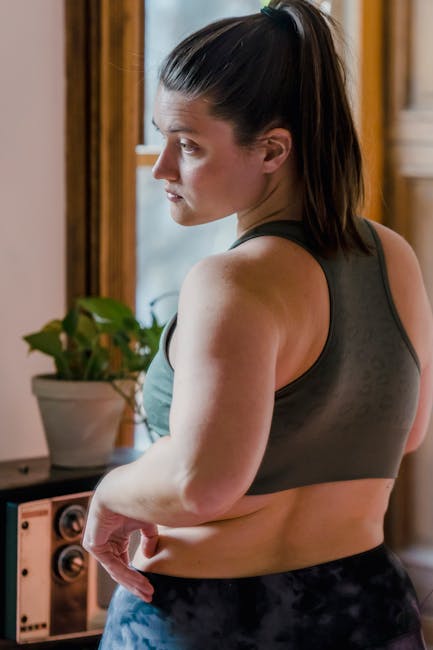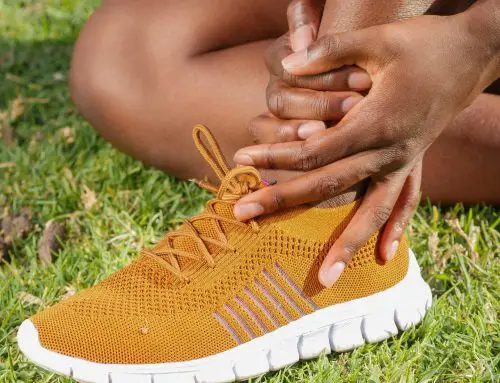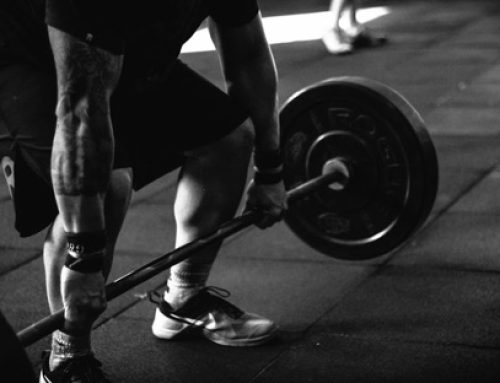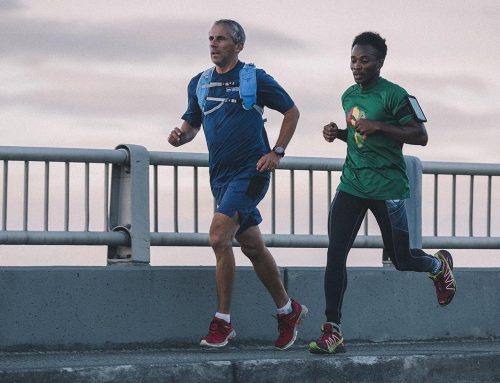Ladies and gentlemen, grab your ice packs and take a seat because we’re about to chat about everyone’s favorite topic: lower back pain. Specifically, how to manage it while maintaining your gains in the weight room. You know what they say, “no pain, no gain.” But unfortunately, our backs didn’t get the memo and are screaming, “no more pain, we’re done with this game!” So, let’s dive into this article on how to keep your back in check while still crushing those deadlifts and squats like a boss.
Contents
- 1 1. Understanding Lower Back Pain in Weight Training: Causes and Symptoms
- 2 Lower Back Pain in Weight Training: Causes and Symptoms
- 3 2. Essential Steps to Prevent Lower Back Injuries during Weight Lifting Exercises
- 4 3. Effective Strategies for Managing Lower Back Pain while Strength Training
- 5 4. Strengthening Core Muscles to Alleviate Lower Back Pain in Weightlifting
- 6 5. Seeking Professional Help: When to Consult a Doctor or Physical Therapist for Lower Back Pain
- 7 Adios, Aching Back!
1. Understanding Lower Back Pain in Weight Training: Causes and Symptoms
Lower Back Pain in Weight Training: Causes and Symptoms
So, you’ve started weight training and now your lower back feels like it’s been hit by a truck. Don’t worry, it’s not just you. Here’s a breakdown of the causes and symptoms of lower back pain in weight training:
- BAD FORM: If you’re lifting weights with bad form, you’re putting unnecessary strain on your lower back. So, if you’re staring at the mirror while lifting or rounding your back, your lower back will probably hate you for it.
- OVERWEIGHT: If you’re overweight, that extra weight is going to put a lot of strain on your lower back. Maybe it’s time to lay off the burgers and hit the treadmill instead.
- NOT WARMING UP: If you’re going straight into heavy lifting without warming up, you’re asking for trouble. Always make sure to warm up properly to avoid injury and lower back pain.
Now that we’ve talked about the causes, let’s take a look at some of the symptoms of lower back pain in weight training:
- SHARP PAIN: If you feel a sharp pain in your lower back while lifting weights, it’s time to take a break and reassess your form.
- TIGHTNESS: If your lower back feels tight or stiff after weight training, it’s a sign that you might be putting too much strain on it.
- WEAKNESS: If you’re experiencing weakness in your lower back, it’s important to take a break and let it rest. Pushing through the pain could lead to long-term damage.

2. Essential Steps to Prevent Lower Back Injuries during Weight Lifting Exercises
So, you’ve decided to hit the weight room and get serious about lifting. But wait! Before you start tossing those dumbbells around, it’s important to take some essential steps to prevent lower back injuries during weight lifting exercises. Because let’s face it, no one wants to be laid up in bed for weeks with a sore back.
- Stretch it out: Before you start lifting, take some time to stretch out your lower back and hips. Some good stretches include knee-to-chest, seated twists, and hip flexor stretches.
- Engage your core: It’s not just about building those six-pack abs, folks. Engaging your core muscles during weight lifting exercises can help stabilize your spine and prevent back injuries. So suck in that gut and get ready to lift!
- Lift with your legs: When lifting weights, take care to lift with your legs and not your back. Keep your back straight and use your leg muscles to power through the lift. And don’t forget to exhale!
By taking these essential steps, you’ll be well on your way to preventing lower back injuries during weight lifting exercises. Of course, there’s always the chance that you’ll still manage to hurt yourself. But at least you’ll be able to say you tried!
3. Effective Strategies for Managing Lower Back Pain while Strength Training
Effective Strategies for Managing Lower Back Pain while Strength Training
So, you’re a gym lover but suffer from lower back pain? Don’t let the pain beat you, beat the pain! Here are some effective strategies for managing lower back pain while strength training:
- Warm-up before the workout: Do some light cardio exercises or stretches that focus on your lower back muscles. Warming up helps prepare your muscles for the workout ahead, reducing your chances of injury.
- Modify your exercises: If any exercise is causing too much strain on your lower back, modify it. For example, instead of deadlifting with a barbell, try dumbbells. Or, if squats cause you discomfort, try using a Smith machine or resistance band.
- Listen to your body: Don’t push yourself too hard if you feel the pain getting worse. Take a break, stretch out, or move on to another exercise. If the pain continues, stop the workout completely and consult a healthcare professional.
Remember, managing lower back pain doesn’t mean you should stop strength training. Take these strategies seriously, and you’ll be able to train happily and healthily!
4. Strengthening Core Muscles to Alleviate Lower Back Pain in Weightlifting
So you’ve got your eyes set on that weightlifting trophy, but your lower back is giving you trouble? Fear not, my fellow fitness enthusiast! There’s a solution to everything, and when it comes to lower back pain, it all comes down to strengthening your core muscles. Here’s how to get started:
- Planks: This classic exercise works wonders for building a strong core. Start with holding it for 30-seconds and gradually increase the duration over time. Try doing 2-3 sets of planks during your workout routine for maximum benefits.
- Dead Bugs: No, not the creepy crawlies kind. The Dead Bug exercise is a great way to work your rectus abdominis, erector spinae, and transverse abdominis muscles. Plus, it’s pretty fun to do (and say!).
- Supermans: Embrace your inner superhero by doing the Superman exercise. Not only will it strengthen your core, but it also works your back muscles. And who doesn’t want a stronger back?
Remember, Rome wasn’t built in a day, and neither was a strong core. It takes time, patience, and consistency to see results. So don’t get discouraged if you don’t see a difference immediately. Keep working hard, and before you know it, you’ll be lifting like a pro (with a pain-free lower back).
5. Seeking Professional Help: When to Consult a Doctor or Physical Therapist for Lower Back Pain
Let’s face it, folks – sometimes you just need to call in the professionals when it comes to your lower back pain. There’s no need to play doctor when there are actual trained professionals who know what they’re doing. Here are some signs that it’s time to seek out a doctor or physical therapist:
1. Your pain is consistently severe – if you’re having trouble getting out of bed or going about your daily activities due to pain, it’s time to see a doctor. They can assess the severity of your pain and provide appropriate treatment, whether it be medication or physical therapy.
2. Your pain lasts longer than a week – if your lower back pain persists for more than a week, it’s time to get professional help. A physical therapist can assess the underlying cause of your pain and provide exercises and stretches to ease the tension.
3. You’re experiencing tingling or numbness – if you’re feeling pins and needles or numbness in your legs along with your lower back pain, it could be a sign of nerve damage. A doctor can assess and diagnose the issue, and a physical therapist can provide exercises to help alleviate the pain.
In short, don’t be stubborn when it comes to your lower back pain. There’s no shame in seeking out professional help – in fact, it’s probably for the best. Take care of your body so it can take care of you!
Adios, Aching Back!
And that’s a wrap on the ultimate guide to managing lower back pain in weight training! Remember, if you’re feeling any discomfort during your workout, stop what you’re doing and take a breather. There’s no shame in taking a little time to stretch and work out the kinks. Your back will thank you later!
But hey, if all else fails, just invest in a comfy bed and a heating pad. And don’t worry, we won’t tell anyone if you ditch your workout for a good ol’ Netflix binge sesh. After all, rest is just as important as reps, right?
Happy lifting (or lounging) my back-pain-free friends!








Leave A Comment